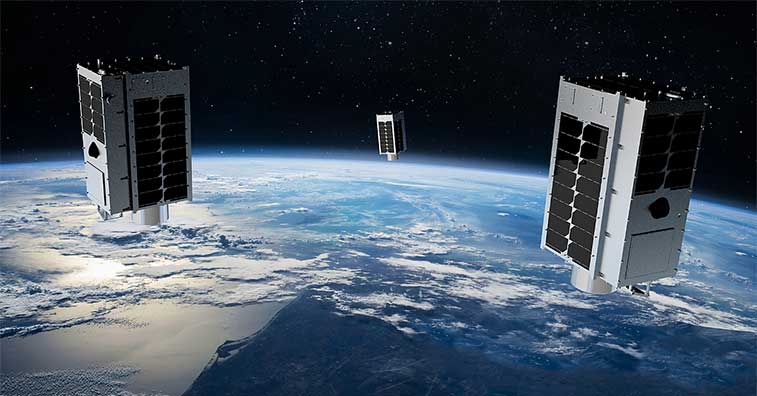GHGSat doubles capacity in record time following launch and operationalization of three new satellites
Montreal, Thursday, August 11 – GHGSat, the world leader in high-resolution methane monitoring from space, continues to improve performance metrics. The company’s three newest satellites have identified more than 100 methane emissions following their launch with SpaceX in late May of this year.
This length of time between the launch of the new GHGSat satellites, which more than doubled the company’s monitoring capabilities, and initial operationalization marks a new record. The milestone provides a tangible demonstration of the company’s ability to quickly scale greenhouse gas monitoring from space. Furthermore, the new X-Band spacecraft communication system has increased data download speed tenfold. Quicker downloading adds onboard capacity for image collection and provides greater global coverage. Faster data delivery is critical for clients to respond promptly to detected methane leaks.
Stephane Germain, GHGSat CEO, said: “Going from launch to the production of emission related climate impact data in just a matter of days is a remarkable achievement. Our partners at Space Flight Laboratory (SFL) were instrumental in this success. In the months leading up to the launch, they demonstrated responsiveness and efficiency in adapting to shifting schedules. The SFL team commissioned the spacecraft quickly without anomalies.”
The three new GHGSat commercial high-resolution satellites – GHGSat-C3 (“Luca”), C4 (“Penny”), and C5 (“Diako”), were also built by Space Flight Laboratory. Each microsatellite includes attitude control technology developed by Space Flight Laboratory. It facilitates the low-inertia platforms to point their onboard sensors precisely at emissions sources and ensures high-quality imaging by maintaining fine pointing.
GHGSat’s six satellite constellation, including the three that were added in May 2022 on SpaceX’s Transporter-5 mission, enables the company to increase methane emission monitoring capacity and to conduct more frequent site revisits, Germain said. GHGSat is set to further increase capacity following the launch of additional satellites by the end of 2023.


